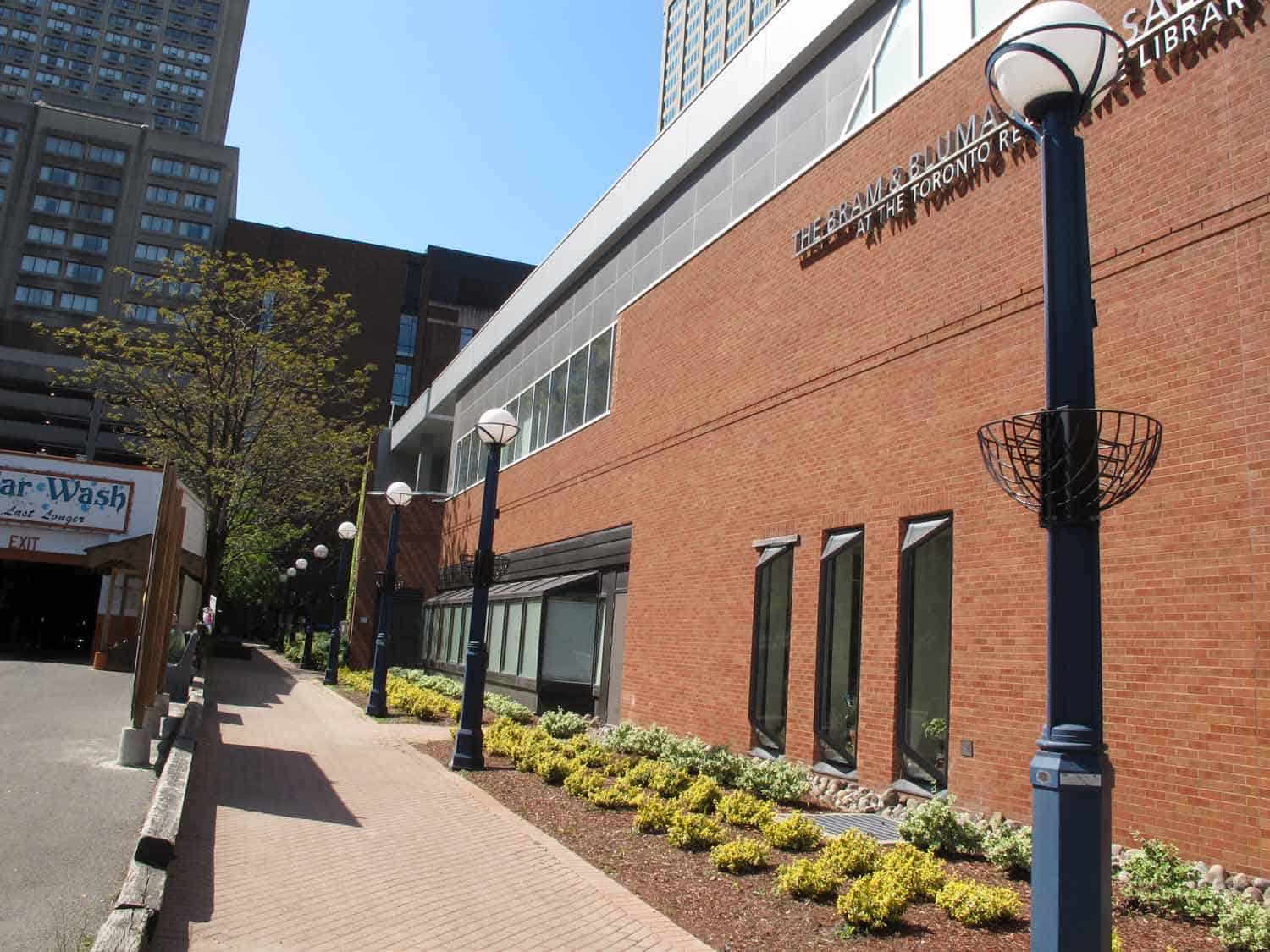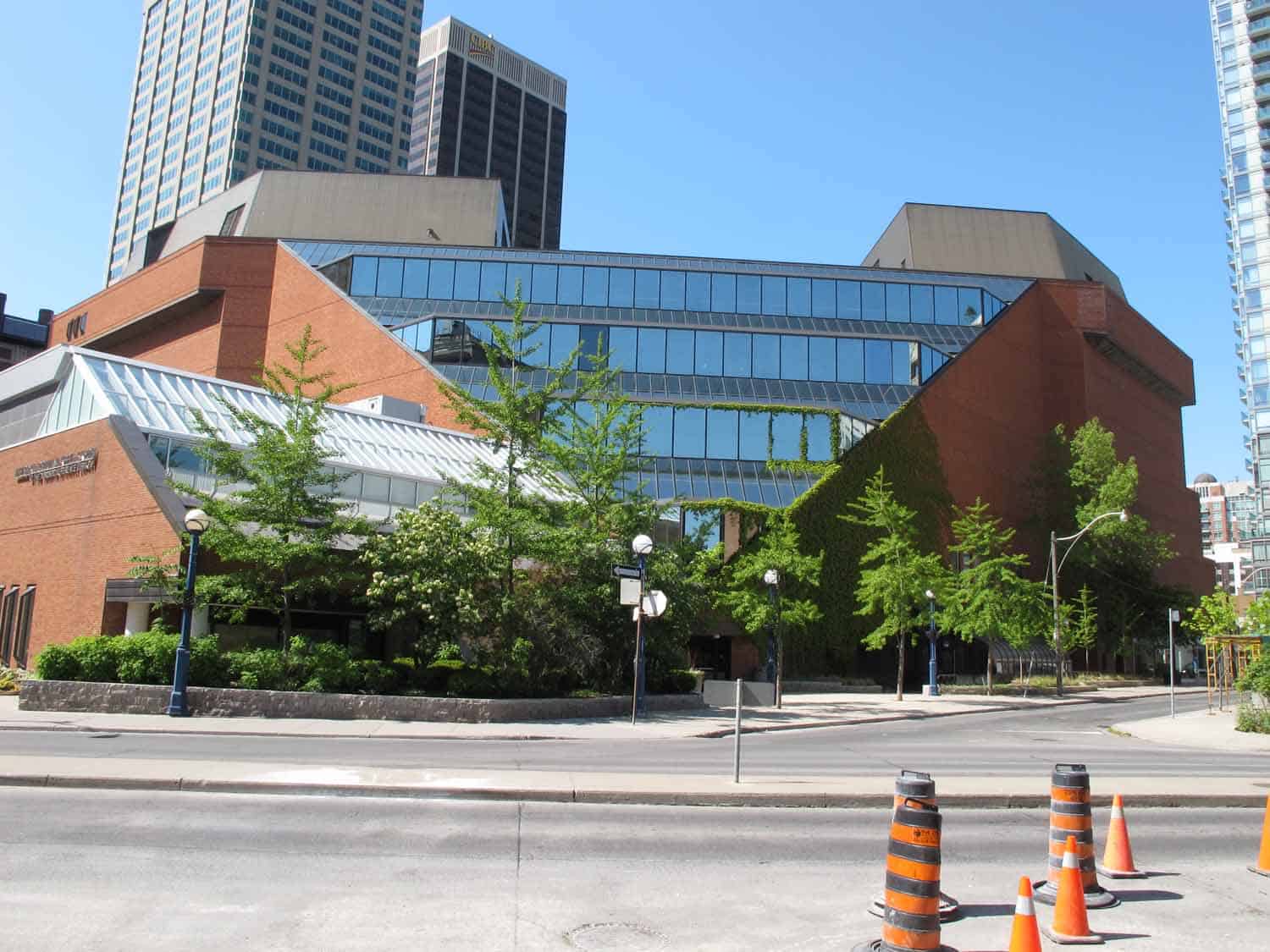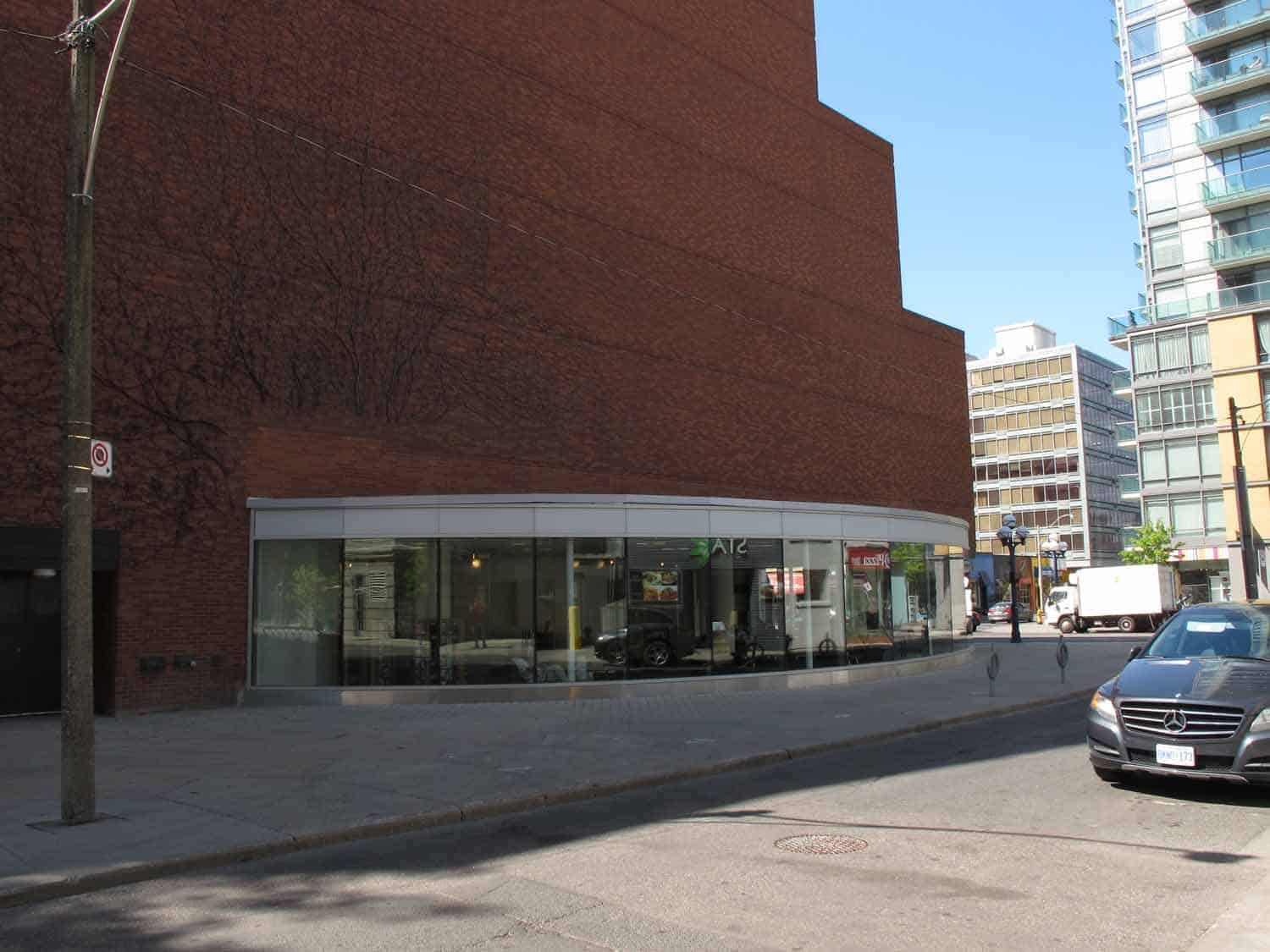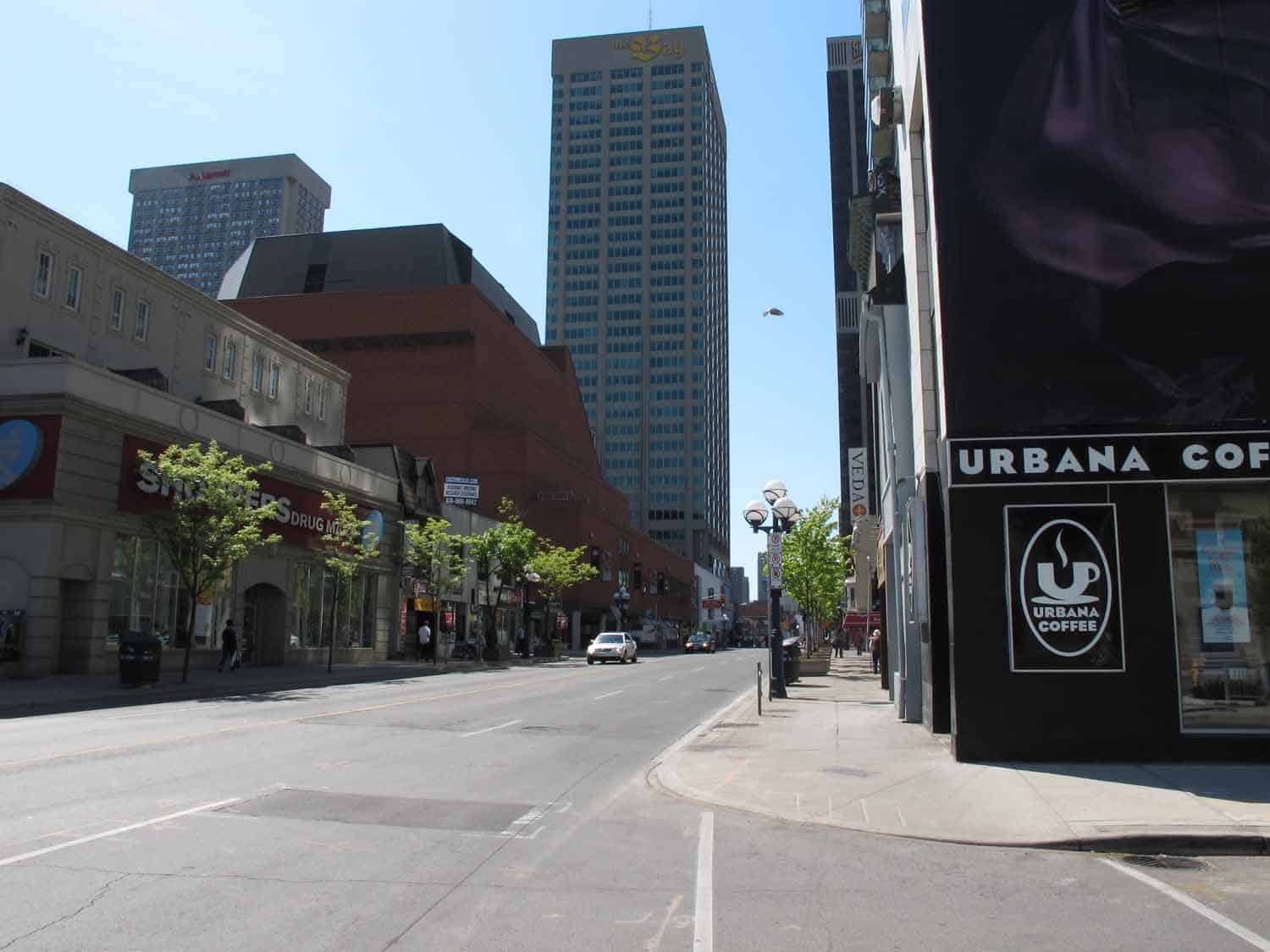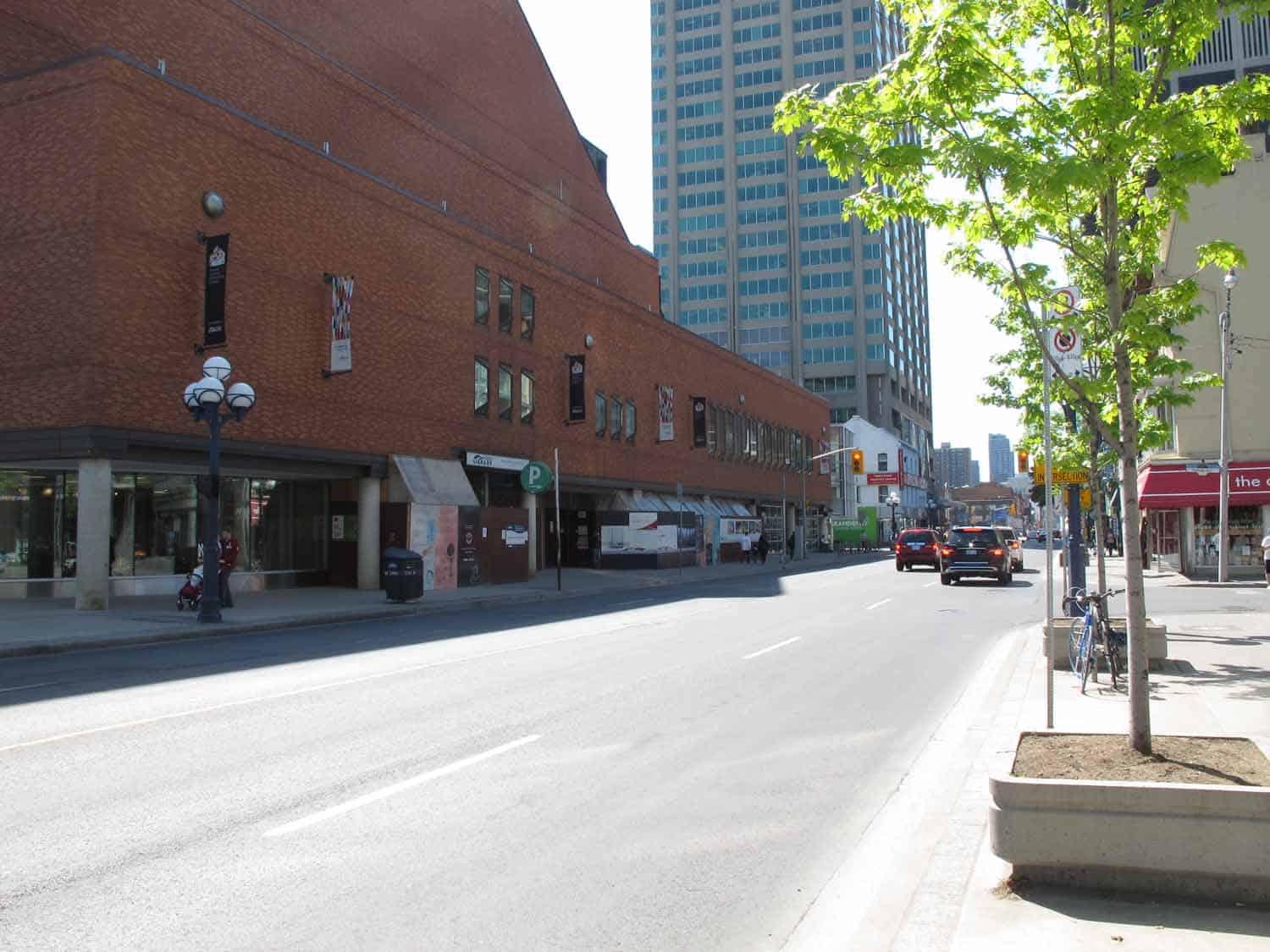Toronto Reference Library
The Metropolitan Toronto Reference Library, one the city’s grand, interior, public spaces of the era, provided unprecedented public access to the substantial reference collection. Architect Raymond Moriyama’s design was described as dramatic and monumental yet infused with a sense of informality.
In 1968, one of the first decisions of the new Metropolitan Toronto Library Board was to replace the original Beaux Arts Toronto Reference Library (1909). A site was selected on Yonge Street, Toronto’s main street, just north of Bloor Street. This location, near the intersection of the two subway lines, was chosen as a central and accessible site within the recently reorganized municipality of Metropolitan Toronto.
The brief, 38,000m² of space, was for what would be Canada’s largest public reference library. Moriyama’s initial concept for a five-storey steel and glass design was modified, to defer to the scale and Victorian character of Yorkville. To diminish the mass of the building, Moriyama terraced back the volume along the diagonal from its corners, and provided colonnades at the sidewalk. The cladding of orange-red brick was a compatible choice for the 19th century neighbourhood.
The modernity of the scheme was most evident in the interior with its spectacular skylit atrium. A multi-storey volume, receding tiers, curvilinear geometry and glass-enclosed elevator cabs characterized the soaring interior space. Hanging gardens inspired the design that incorporated cascading plants, water features and natural light. The warm rust colour of the exterior brick was repeated in the wall-to-wall carpeting. Colourful vertical banners added a festive air, and emphasized the volume of the space.
Known today as Toronto Reference Library, the building is a significant work of Moriyama and Teshima. The library garnered the firm a Governor General’s medal for architecture in 1982.
In order to address radical changes in library programming as well as digital technologies, a major rehabilitation of the library was completed in 2012. Ajon Moriyama, son of Raymond, was project architect for Moriyama and Teshima Architects.

